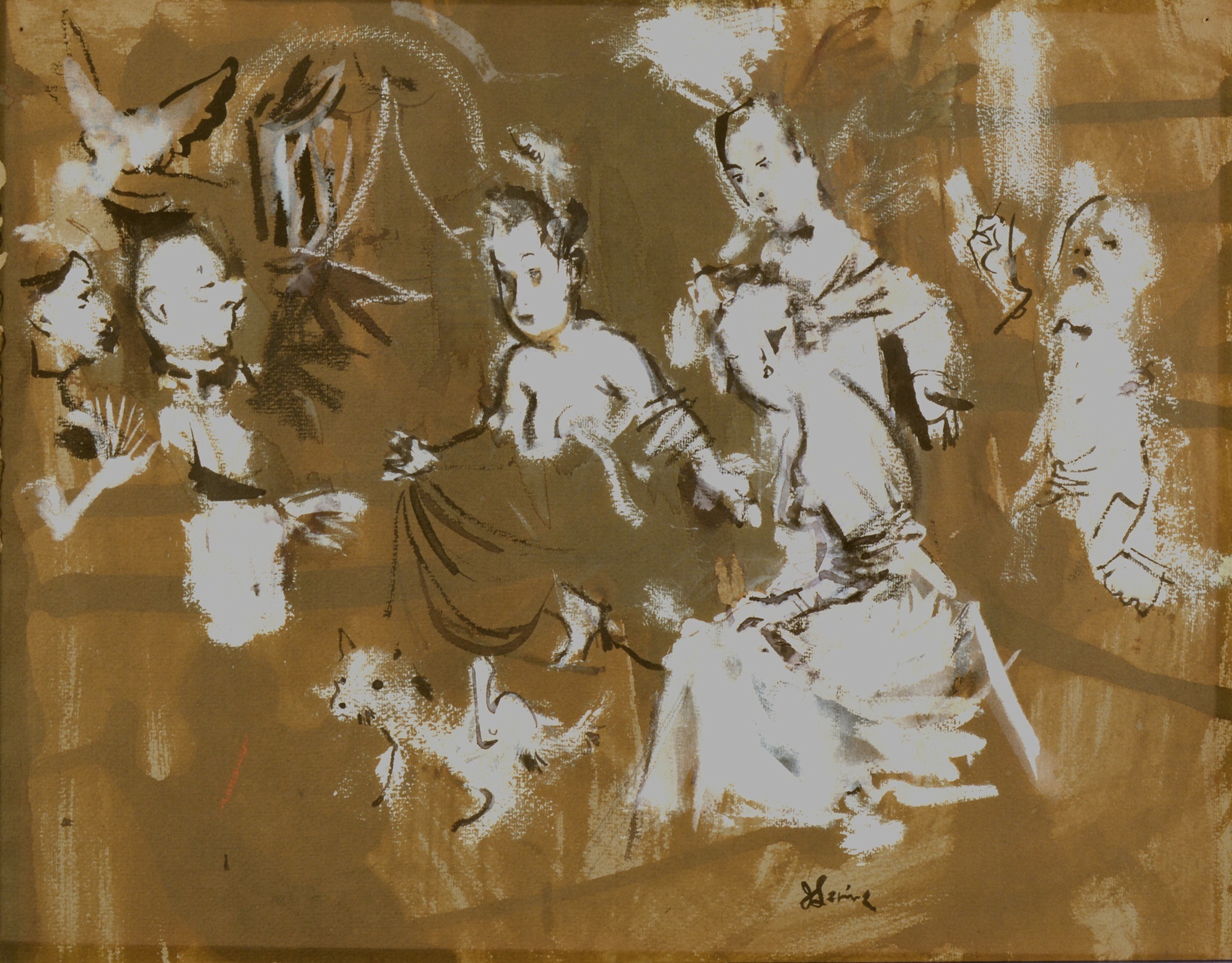About The Artwork
Painter, printmaker and draftsman Jack Levine is best known for his unsparing images of corrupt politicians, slippery gangsters, fat cat businessmen and uptight socialites. Levine studied art at Harvard University and worked on and off for the Depression-era Works Progress Administration’s Federal Art Project in Boston before serving in World War II. As a practitioner of American Social Realism, Levine’s cutting satire exposed the foibles and venality of his subjects in a manner that recalls the mordant caricatures of Francisco de Goya and Honoré Daumier, and twentieth-century social political commentary seen in paintings by George Grosz and the writings of Bertholt Brecht.
Levine made several preparatory images and prints related to the painting Reception in Miami (1948, Hirshhorn Museum and Sculpture Garden, Smithsonian Institution, Washington DC). The artist targeted the fawning Americans who hosted the Duke and Duchess of Windsor during their visit to Florida in the late 1940s. He chose the subject after reading about the encounter in the New York Post:
… at one of their appearances in the [hotel] lobby there was much bowing and curtsying on the part of our fellow Americans. I thought this disgusting. That was the basis for something like a drawing-room comedy, with all kinds of effete snobs (as someone said later) bowing and scraping, like puppets at the end of a string, and becoming British subjects for the evening. I thought that was a good topic. I think I probably considered my entry into any painting on the basis of subject matter. It’s something I would never discard. Subject matter is all important. 1
Levine addressed what he viewed as the absurdity of ancestral aristocracy in works such as The End of the Line (1948, The Phillips Collection, Washington DC) but Reception in Miami skewered Americans who supplicated themselves in the face of royalty. By 1948, the duke and duchess — the former King Edward VIII who abdicated to marry the divorced American Wallis Simpson — lived outside of England, mostly in France. Levine mocks their public image — she with expensive jewels, he with an exaggerated, upturned nose and slightly befuddled appearance — but saves his most pointed criticism for the group of four Americans responding to the royal couple.
Caricatures gain maximal impact from small, closely observed details, which Levine provides throughout this study. He applies white gouache, black ink and brown watercolor in quick brushstrokes that capture the attire and attitude of each figure. Two women curtsy at the center of the composition, one affectedly lifting her right pinky and bending deeply enough to expose her sagging décolletage. The rotund maitre d’hôtel — holding a menu in his left hand and snapping the fingers on his right — looks down his nose at the scene. Levine captures the figure’s haughty countenance by using economical smudges of white gouache plus the barest of black lines. In a small detail that contradicts the opulence of the setting (and would not be out of place in similar works by Grosz), a small dog scurries into the space between the royal couple and their American admirers and lifts his leg.
One of several preparatory works that Levine executed for Reception in Miami (two notable versions are held by Harvard’s Fogg Art Museum and the Sheldon Museum of Art at the University of Nebraska, Lincoln), this study very closely resembles the final painting in composition and style.
ELLEN ADAMS
Assistant Professor, Frederik Meijer Honors College, Grand Valley State University
References
- Jack Levine, “Jack Levine on Jack Levine,” in Jack Levine, introd. Milton W. Brown (New York: Rizzoli International Publications, Inc., 1989), 48.

